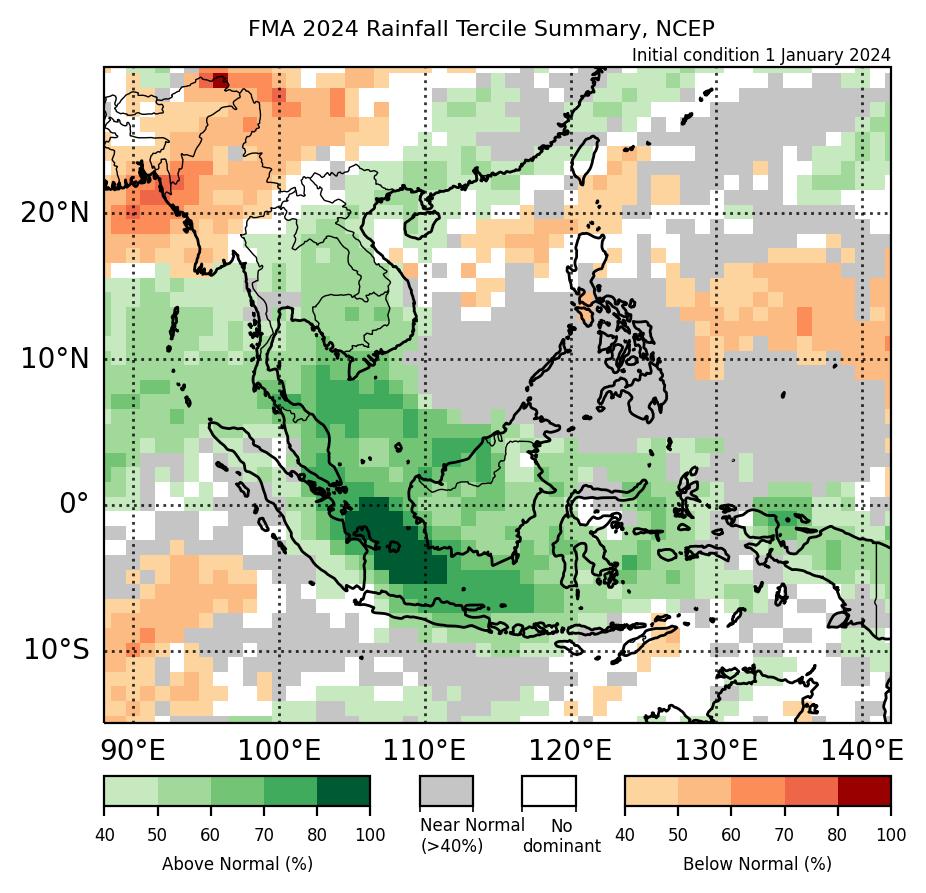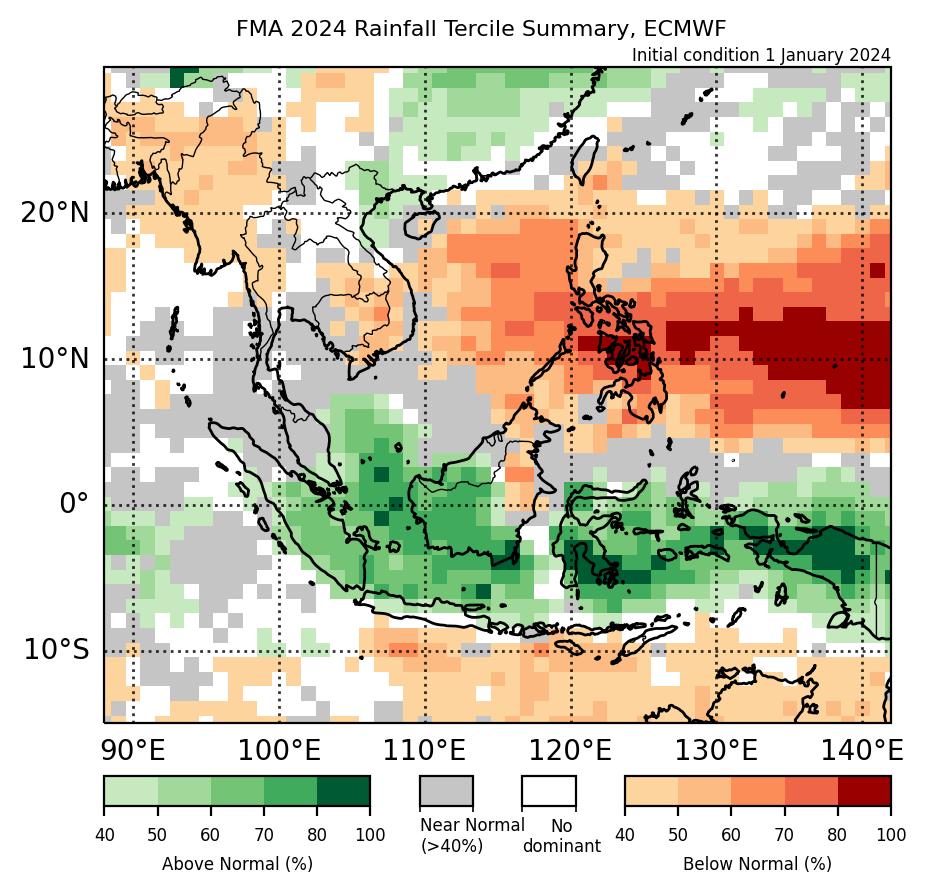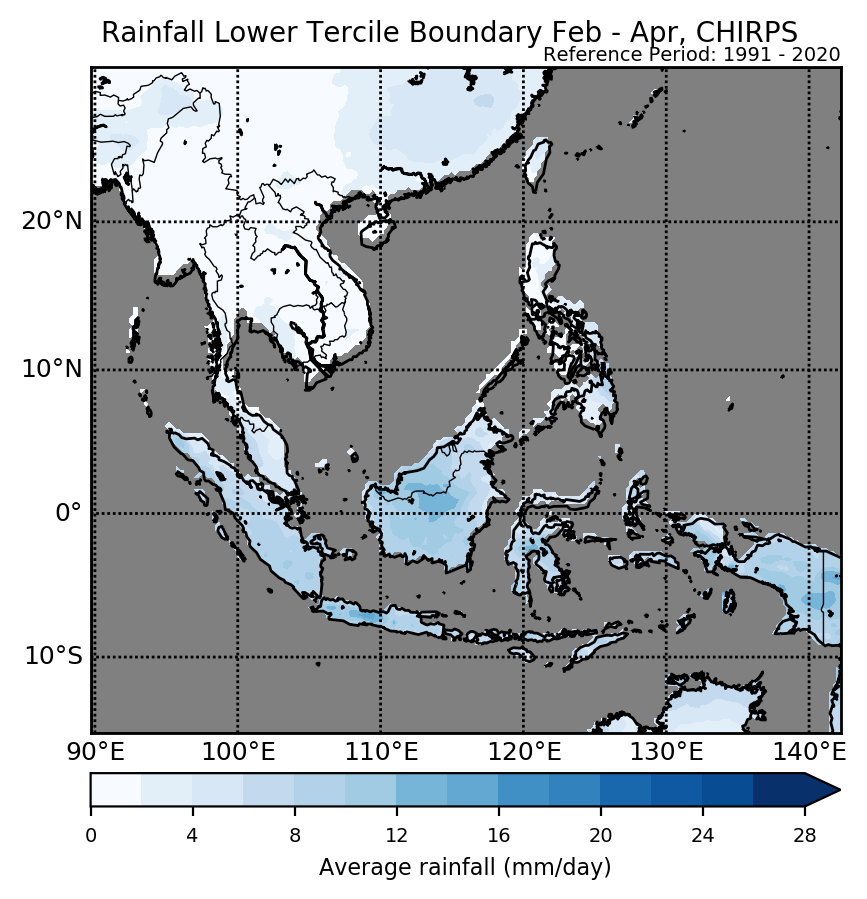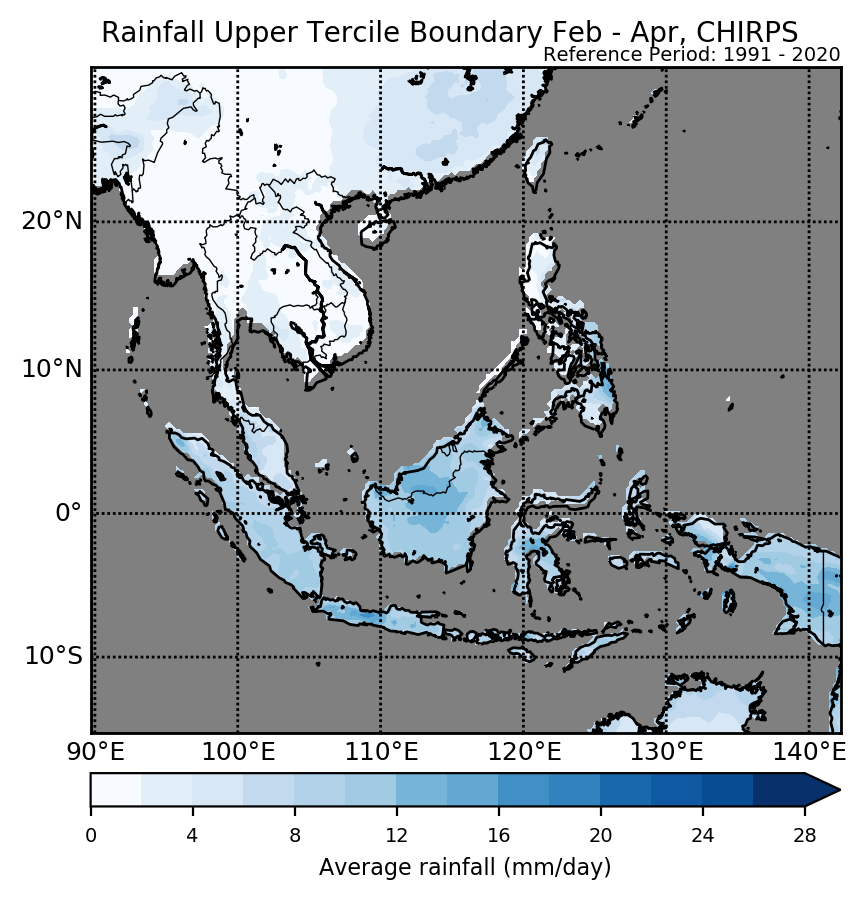Rainfall
Seasonal Rainfall Outlook: February-April 2024 (FMA)
Issued: 30 Jan 2024
For FMA 2024, above-normal rainfall is predicted for much of the equatorial region with below-normal rainfall for the northeastern Maritime Continent.
For FMA 2024, above-normal rainfall is predicted for much of the equatorial region based on the multi-model ensemble (Figure 4). The UK Met Office model (Figure 3) shows the highest confidence for above-normal rainfall over the central Maritime Continent, followed by the ECMWF and then the NCEP models (Figures 2 and 1). Models’ skill is moderate to good for above-normal rainfall over the equatorial region.
Below-normal rainfall is predicted over the Philippines and northeastern Borneo, based on the multi-model ensemble (Figure 4). The ECMWF (Figure 2) and UK Met Office (Figure 3) show high confidence for below-normal rainfall for this region, whereas the NCEP model (Figure 1) predicts near-normal rainfall.
For Mainland Southeast Asia, the models also show disagreement. Over Myanmar, the NCEP and ECMWF models (Figures 1 and 2) predict below-normal rainfall, while the UK Met Office model (Figure 3) predict no dominant tercile. Over the rest of Mainland Southeast Asia, the NCEP model predicts above-normal rainfall, whereas the ECMWF and UK Met Office models predict predominantly a mix of near-normal and no dominant tercile. The models’ skill for below-normal rainfall is low to moderate over Mainland Southeast Asia.

Figure 1: Rainfall tercile summary predictions of NCEP model for FMA 2024 (contains modified Copernicus C3S information).

Figure 2: Rainfall tercile summary predictions of ECMWF model for FMA 2024 (contains modified Copernicus C3S information).

Figure 5: Average climatological rainfall's lower tercile boundary for FMA based on CHIRPS (Reference period: 1991-2020).

Figure 6: Average climatological rainfall's upper tercile boundary for FMA based on CHIRPS (Reference period: 1991-2020).
The qualitative outlook is assessed for the region in general. For specific updates on the national scale, the relevant ASEAN National Meteorological and Hydrological Services should be consulted.